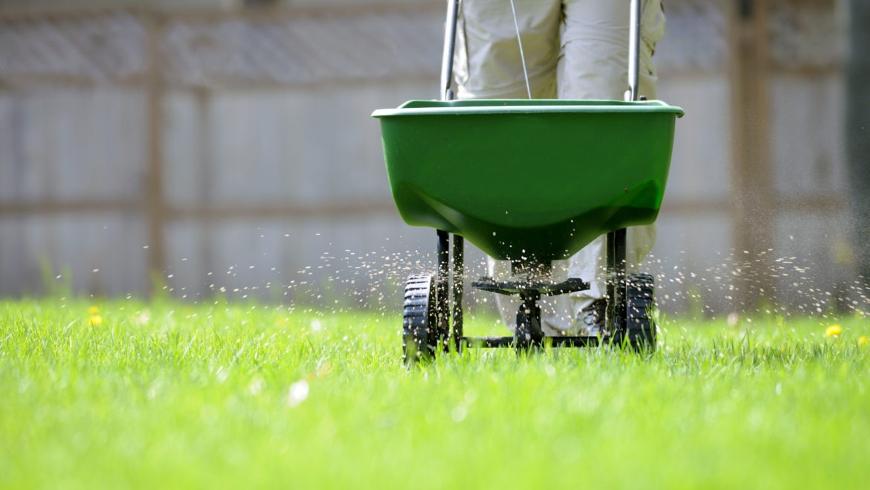Cost of Lawn Care
Last updated 27th February, 2024
Has your lawn been neglected? Do you need lawn treatment services?
This guide has been designed to answer all your questions about the cost of lawn care. From hiring a lawn treatment service to different types of lawn care treatment. We've got it covered!
Let's get stuck in!

How Much Does Lawn Care Cost?
There are a number of very good reasons why you should treat your lawn with fertiliser products. First of all, your lawn is the only garden plant that gets "pruned" twenty times or more every year.
Why does my lawn need extra care?
The grass grows using photosynthesis and by extracting nutrients from the soil. Sunlight for photosynthesis is hopefully available every year, but the supply of nutrients will run out and needs eventually to be replaced otherwise the grass will become thin and weak which will allow weeds and moss to dominate the lawn.
In addition, you don't walk on other plants in the garden but your lawn is regularly walked like a carpet. Very few plants can tolerate this but grass can take a lot of abuse as long as you give it plenty of help to recover and repair in the form of nitrogen and nutrient products.
So, what does fertiliser do?
Lawn fertiliser will help the grass stay healthy and be able to handle frequent mowing and being used for walking and playing on! Luckily, lawn fertiliser treatments are not that expensive if you hire a professional on a contract basis to treat your lawn regularly.
A 12-month contract can cost less than £100 per year for a small garden and keep your lawn looking fabulous. There are also some companies who provide other garden maintenance services which may have similar contracts to include other maintenance tasks too.
Lawn fertilisers contain the basic chemical elements required by plants to make food. These are basically the mineral nutrients that may be in short supply in the soil.
The primary nutrients needed by plants include Nitrogen, Phosphorous or Phosphate and Potassium. There are also secondary nutrients which are far less in demand but still essential including Calcium, Magnesium, Sulphur and trace elements like iron, boron and zinc.
How often do I need to do this?
With most fertilisers, you're fine feeding the lawn once or twice every year. But if your lawn gets a lot of wear and tear, you might also want to add an additional feed, perhaps in the autumn to help rejuvenate the lawn during the quieter winter months.
You should always fertilise after mowing rather than before mowing, otherwise, you'll disturb the fertiliser on the surface. Adding fertiliser just after it rains is a great time to do it as the moist ground will more readily absorb the fertiliser.
New lawns, whether planted from seed or by laying new turf, in particular, need all the help they can get so a pre-seeding fertiliser should be applied to the soil before sowing or laying new turf.
Lawn Care Prices
A full lawn care service will cost from around £30-£120per month depending on the size of the lawn. This service includes mowing, trimming and edging, sowing, aerating and fertilizing.
But if you just want the lawn to be treated with fertiliser, then there are companies which offer a quarterly service starting from as little as £13 every treatment (every 3 months) - this will likely work out cheaper than buying the necessary fertiliser products yourself.
Below are some estimated costs of lawn fertilisation.
| Job Description | Avg. Cost | Duration |
|---|---|---|
| Full lawn care service | £100 per month | 2-3 hours |
| Lawn fertiliser treatment only | £25 per quarter | 1 hour |
| One-off fertiliser treatment | £45 | 1 hour |
Cost Breakdown
Individual costs of a lawn care service - Total Cost: £100 per month










